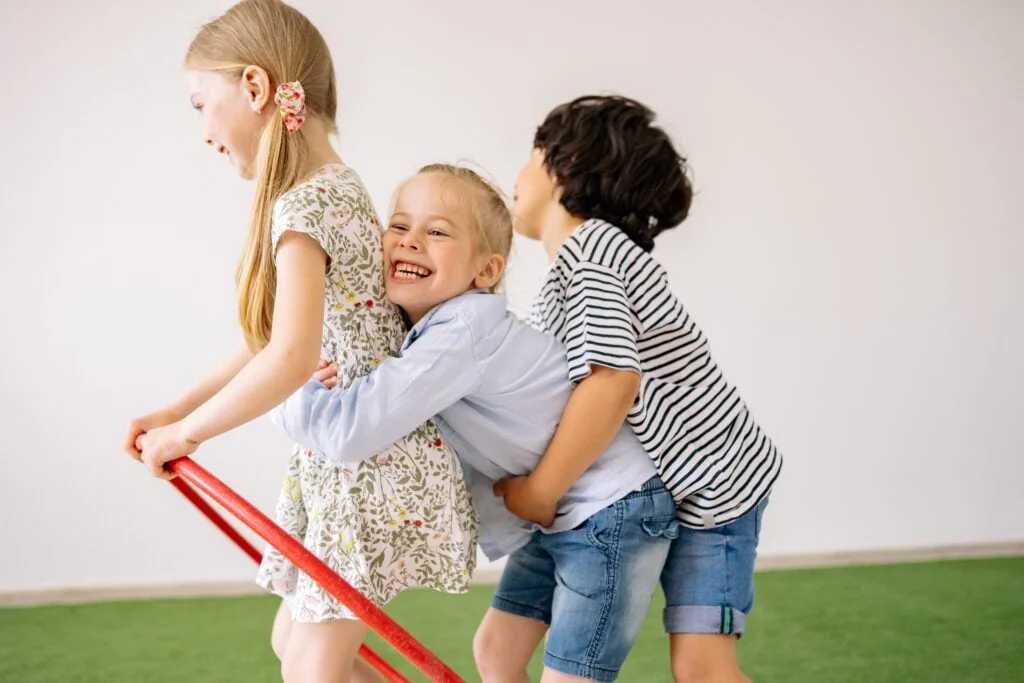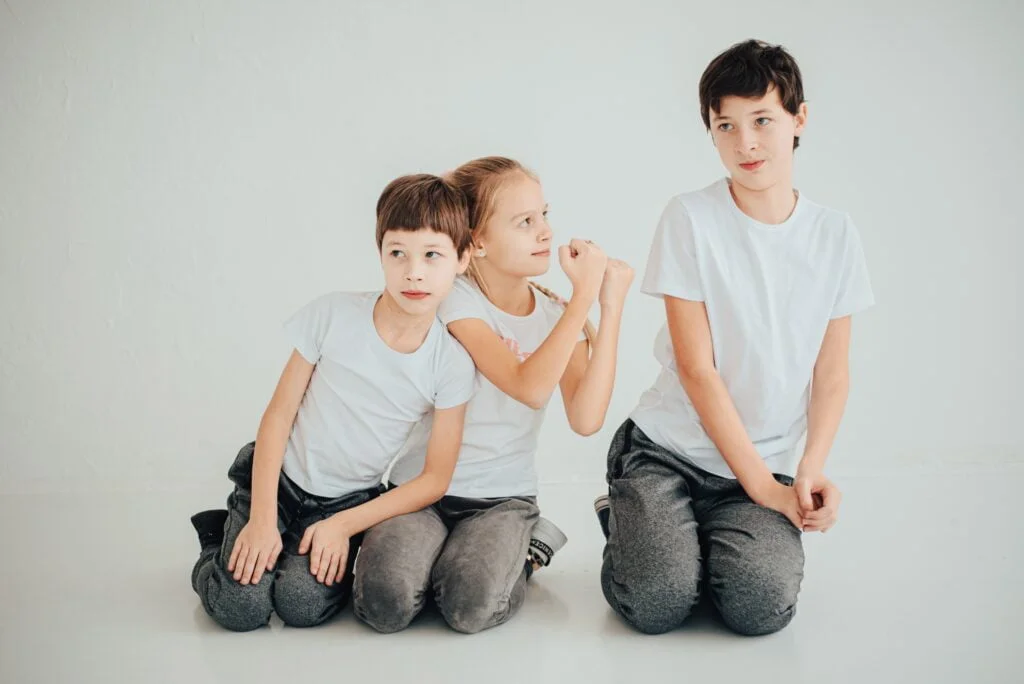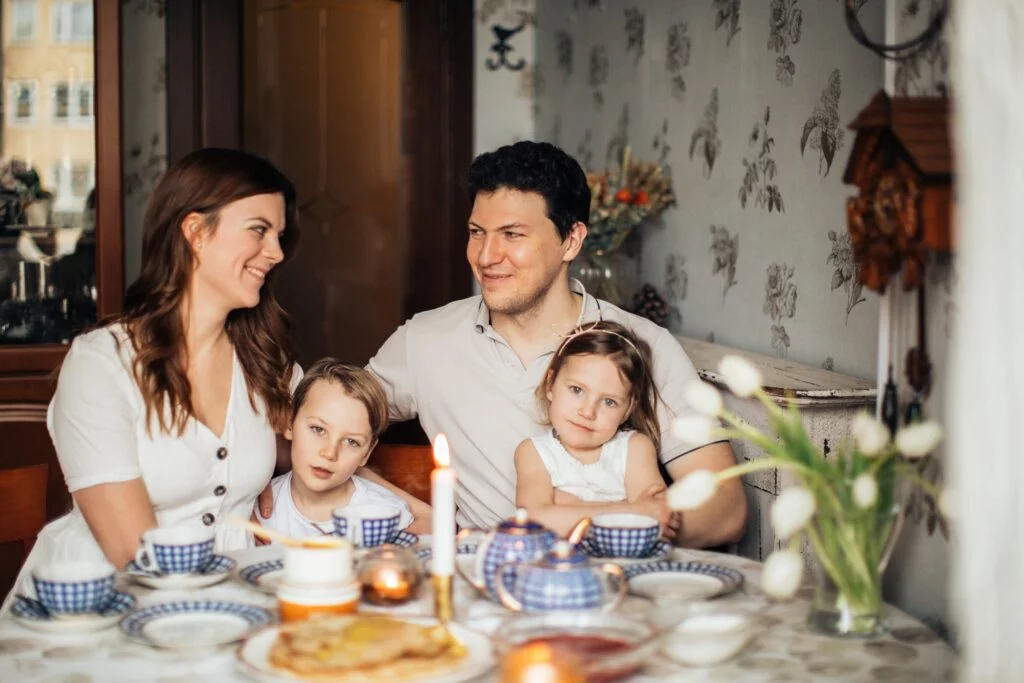You’ve probably heard about ADHD, right? It’s a common topic in many households, schools, and therapists’ offices. However, not much light is shed on a very intimate and close-to-heart subject: ADHD and siblings. The way ADHD affects sibling dynamics is profound and worthy of exploration.
Imagine being Sarah. She’s the eldest in a family of three kids, and her youngest brother, Liam, has ADHD. Life with Liam isn’t always a walk in the park. The whirlwind of emotions, the impulsive decisions, and the constant thirst for attention can often leave Sarah and her other sibling feeling overshadowed.
Some of the links in this post are affiliate links. This means if you click on the link and purchase the item, I will receive an affiliate commision at no extra cost to you. All opinions remain my own. Read more on our Privacy Policy Page

What is ADHD ?
Before diving deep into the world of siblings and ADHD, it’s essential to understand what ADHD really is. Attention-Deficit/Hyperactivity Disorder (ADHD) is a neurodevelopmental disorder characterized by inattention, impulsivity, and hyperactivity. It’s like the brain’s wiring is slightly different, making it challenging to focus or control impulses.
When the term ADHD springs up, images of hyperactive children bouncing off walls or daydreaming students gazing out the window often come to mind. But ADHD, or Attention-Deficit/Hyperactivity Disorder, is much more than these stereotypes. To truly grasp the essence of ADHD and its impact, especially on sibling relationships, one must understand its intricacies.
The Three Faces of ADHD
ADHD is not a one-size-fits-all disorder. It primarily manifests in three distinct types:
- Inattentive Type: Those with this type often find it hard to organize or finish a task, to pay attention to details, or to follow instructions or conversations. They’re easily distracted and often forget daily routines. It’s not about being “lazy” or “careless”; their brain is genuinely wired differently.
- Hyperactive-Impulsive Type: This is what most people picture when they think of ADHD. Individuals in this category fidget and talk a lot. It’s difficult for them to sit still for long (like during dinner or while doing homework). Impulsive behaviors, like interrupting others or speaking at inappropriate times, are common.
- Combined Type: As the name suggests, this type combines elements of the other two. It’s the most common form of ADHD.
What Causes ADHD?
The exact cause remains a topic of ongoing research. However, several factors come into play:
- Genetics: ADHD often runs in families. So, if Sarah’s cousin had ADHD, Liam’s chances of having it would be higher.
- Brain Anatomy and Function: Advanced imaging techniques have shown that the brains of people with ADHD can develop differently than those without the disorder.
- Environmental Factors: Exposure to toxins like lead, or maternal smoking and alcohol use during pregnancy, might increase the risk of developing ADHD.
ADHD is Not Just a Childhood Disorder
While it’s often diagnosed in childhood, ADHD doesn’t just “go away” as one grows older. Many people continue to experience symptoms into adulthood. It’s essential to understand this long-term aspect to ensure continuous support and understanding.
Treatment and Management
ADHD is manageable, and a variety of treatments exist. They include:
- Medication: Stimulant and non-stimulant medications can help balance neurotransmitters, aiding in symptom management.
- Behavioral Therapy: This helps in developing coping techniques and addressing disruptive behaviors.
- Lifestyle Adjustments: Regular sleep, a balanced diet, and physical activity can significantly assist those with ADHD.
By truly understanding ADHD, families and siblings can be more empathetic and supportive. Remember, knowledge is the bridge to compassion. The more we comprehend ADHD, the better equipped we are to foster positive sibling relationships amidst its challenges.
👉>>> Enhance Sibling Bonding with Our Recommended Products!
ADHD’s Ripple Effect on Siblings
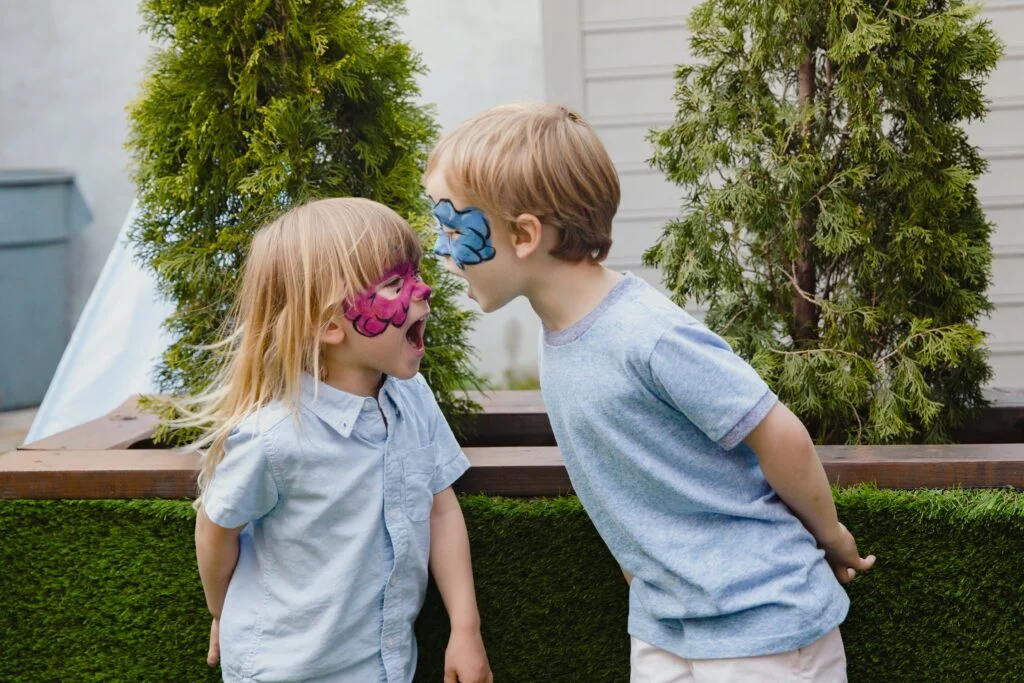
Often, when a family member is diagnosed with ADHD, the focus naturally shifts to them. Frequent medical appointments, therapy sessions, and the occasional disruptions during family outings due to impulsive behavior mean that life can often revolve around the ADHD sibling. But what about the others?
Being a sibling to someone with ADHD can be a roller coaster.
The interplay between ADHD and sibling dynamics is like the concentric circles created by a pebble tossed into a pond. The impact of ADHD doesn’t remain confined to the diagnosed individual but extends outward, touching those closest to them, particularly siblings. Delving deeper into these effects can offer clarity and understanding.
Navigating the Emotional Spectrum
Elevated Moments: Siblings with ADHD often infuse the household with an infectious energy, fostering spontaneous and memorable events that uplift everyone around them.
Challenging Times: However, the journey isn’t always smooth. Impulsive decisions, distractions, and heightened needs for stimulation can lead to tension and conflicts.
Shadows of Neglect: The intensive attention that an ADHD diagnosis demands can sometimes push other siblings to the background. The constant focus on managing and accommodating ADHD can make others feel like their narratives are lost or undervalued.
Juggling Dual Roles
For siblings without ADHD, there’s often a dual role to play. At times, they become the guardians, stepping in to assist, protect, or guide their ADHD-afflicted sibling. On other occasions, they might feel like the aggrieved party, coping with disruptions or navigating the intricacies of perceived favoritism.
Personal Growth Amidst Challenges
Despite the hurdles, there’s a silver lining. Growing up alongside a sibling with ADHD can foster:
Empathy and Insight: Regular interactions can foster a deeper understanding that everyone, irrespective of their challenges, brings unique perspectives and deserves respect.
Cultivating Patience: Adapting to the pace and rhythm of a sibling with ADHD can inculcate patience, a virtue that serves well in myriad life situations.
Building Resilience: Encountering and overcoming daily challenges can mold individuals into resilient beings, prepped for future challenges.
Seeking Individual Significance
With much attention pivoted towards managing ADHD, it’s vital for other siblings to recognize and establish their own identities. Pursuing personal passions, achievements, and carving out their distinct space becomes paramount for a wholesome self-image.
The External World’s Influence
The perceptions and actions of schools, friends, and extended families can significantly shape the ADHD sibling dynamic. Acceptance and inclusion can foster solidarity, while misunderstandings or prejudices can strain relationships.
In wrapping up, it’s evident that ADHD’s influence on siblings is multifaceted. While challenges exist, they’re juxtaposed with opportunities for growth and understanding. Recognizing and navigating these dynamics ensures a harmonious familial journey.
The Role of Parents in Balancing the Scales
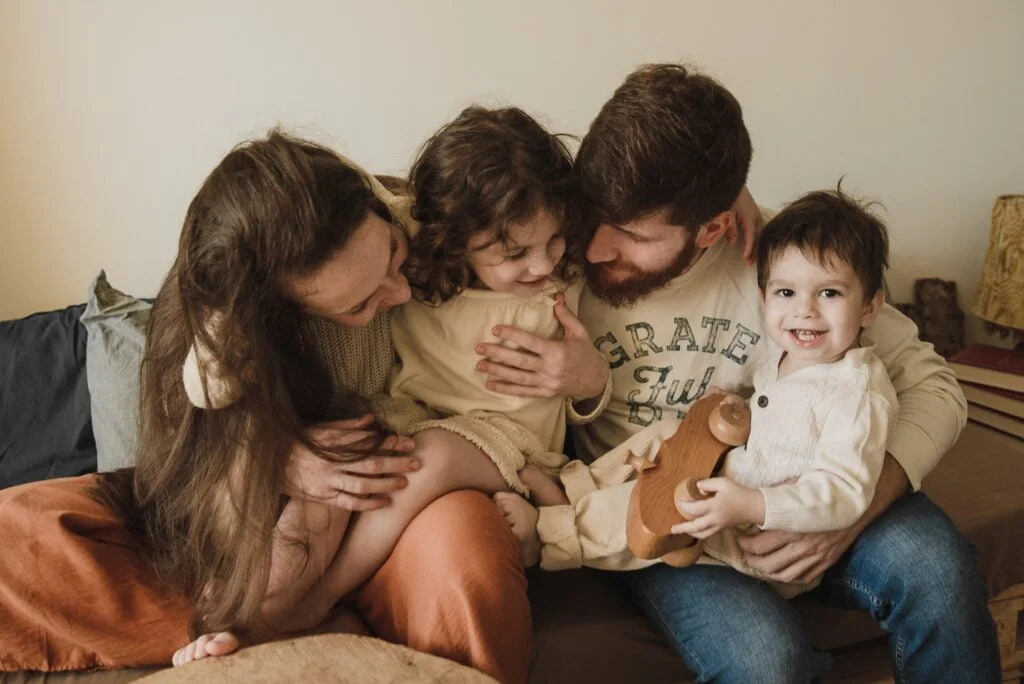
Parents play a crucial role in ensuring that the non-ADHD siblings don’t feel left out. It’s a balancing act, no doubt, but it’s essential for maintaining harmony.
- Open Communication: Parents should foster an environment where the non-ADHD sibling feels comfortable sharing their feelings without judgment.
- Allocate ‘Special Time’: Just like date nights for couples, parents should allocate special time for their non-ADHD child. Whether it’s a movie night, a day out, or even just an evening stroll, these moments can help bridge the emotional gap.
- Educate and Inform: Ignorance can breed resentment. By educating the non-ADHD sibling about the condition, parents can cultivate understanding and empathy.
Balancing Family Life with ADHD: A Parent’s Playbook
Hey there, amazing parents! If your family’s jigsaw puzzle includes a piece labeled ‘ADHD’, you might sometimes feel like you’re trying to solve a Rubik’s Cube in the dark. But fear not! Here’s a little guide to help you keep everyone in the family feeling loved, heard, and valued.
Talk It Out
- Family Chats: Grab some popcorn and gather around for family talk time. It’s like a fun venting session where everyone shares their day and feelings. Plus, it’s a perfect opportunity to clear up any misunderstandings.
- ADHD 101: Give everyone a crash course on what ADHD really is. When everyone gets the ‘why’ behind the actions, things become a lot clearer.
Special Time for Special Peeps
Every kiddo in your tribe is one-of-a-kind. While your ADHD champ might need a bit more attention:
- One-on-One Dates: Schedule a ‘date’ with each child. Maybe it’s baking cookies, building a LEGO castle, or just chatting. It’s about making them feel like the superstar they are!
- Celebrate the Small Stuff: Whether it’s a scribbled drawing or an A in math, throw mini-parties for every win.
Equip Your Team
Think of your family as a superhero squad. Each member needs their own set of tools:
- Dealing with Oopsy Moments: Teach the siblings ways to stay cool when things get a tad unpredictable with their ADHD bro or sis.
- Spread the Empathy: Share stories or watch shows that help them step into their sibling’s shoes. It’s all about understanding where everyone’s coming from.
Family Game Rules
Creating a playbook can help keep things smooth:
- Rules are Rules: Make sure everyone knows the house rules. It’s like a game—everyone follows the same rules, but they might have different levels to tackle.
- Predictable Play: Daily routines can be like a comforting lullaby amidst the rock n’ roll of family life. Dinner time, movie nights, or even bedtime can become fun rituals.
Phone a Friend (or Expert)
When the going gets tough:
- Join the Parent Club: There are workshops and groups out there where parents swap stories and tips. Who knows, you might find your next best strategy there!
- Counselor to the Rescue: Sometimes, a friendly therapist can offer insights or just be a listening ear. It’s like having an emotional toolkit at your disposal.
Love, Love, and More Love
Remember, you’re the heart of the family. A hug, a pat on the back, or even a simple ‘I love you’ can work wonders. Make sure each child knows they’re your world, no matter what.
At the end of the day, your family’s symphony might have its own unique rhythm, but with a sprinkle of understanding and a dash of love, you’ll create the most heartwarming melody ever. Keep rocking it!
👉>>> Enhance Sibling Bonding with Our Recommended Products!
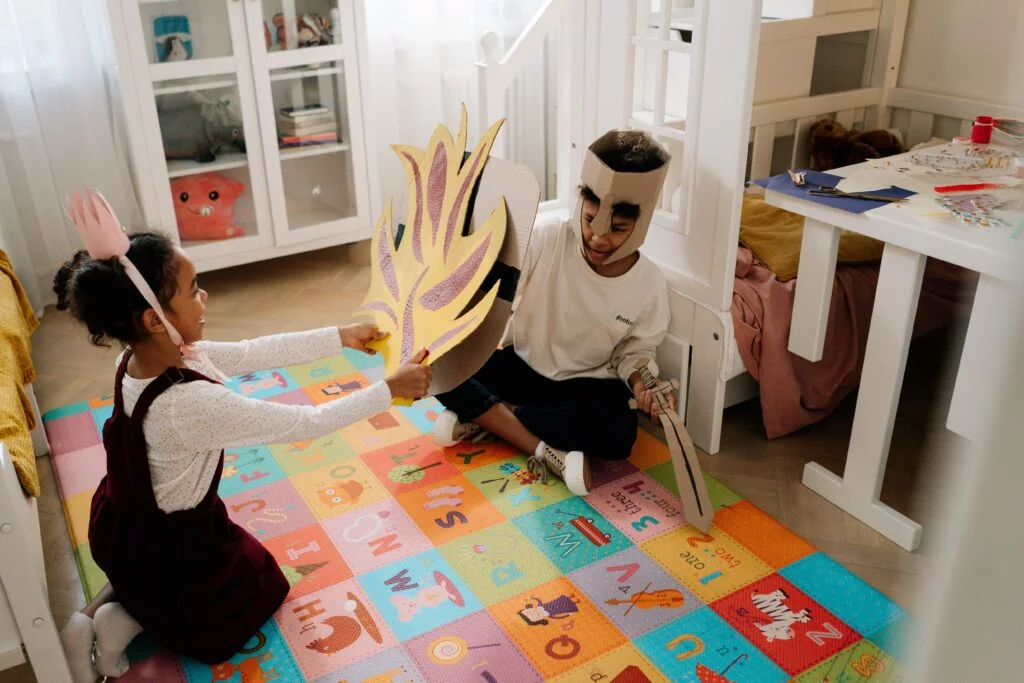
In the Shoes of an ADHD Sibling
Let’s not forget the individual with ADHD in this equation. For them, life isn’t easy either. They are often misunderstood, judged, and even reprimanded for things beyond their control. The journey is just as emotional and tumultuous.
Navigating life as the sibling of someone with ADHD can be akin to walking a tightrope. At times, it’s a thrilling adventure, full of unexpected highs and moments of profound connection. At other instances, it can be a test of patience, balance, and understanding. Let’s dive into this unique journey to better grasp the emotions and experiences from their perspective.
A Spectrum of Emotions
The Highs: There’s rarely a dull moment! The ADHD sibling often brings spontaneity, energy, and creativity to the table. It’s like having a burst of sunshine even on a cloudy day. Laughter, impromptu games, and unpredictability can make every day feel like an adventure.
The Challenges: However, the path isn’t always illuminated with rainbows. There can be instances of interrupted plans, frequent distractions, or unforeseen emotional outbursts. It might sometimes feel like riding an emotional roller coaster without a safety harness.
The Quest for Understanding: As an ADHD sibling, you might occasionally wonder why things can’t be “normal” or why extra patience and understanding are often required. But with time, this quest morphs into deeper empathy and appreciation for neurodiversity.
like:
Sunny Days: Living with an ADHD sibling means life is rarely boring. Think of the spontaneous dance-offs, creative playtimes, and endless laughter. It’s like having a surprise party every day!
Bumpy Roads: Of course, every roller coaster has its dips. Sometimes there are surprise mood swings, interrupted plans, or just feeling like you’re in the world’s longest game of “Wait, what’s happening now?”
Growing Understanding: At first, you might scratch your head wondering why your sibling behaves a certain way. But over time, it’s like solving a puzzle, understanding them piece by piece, and learning to cherish the picture it forms.
Balancing Act
Being the sibling to someone with ADHD can sometimes mean wearing many hats:
The Protector: Often, you might find yourself stepping in to defend your sibling from misunderstandings, teasing, or judgments from outsiders. It’s like being a superhero, always on guard, ensuring your kin is treated with kindness and respect.
The Student: Every day offers lessons in patience, understanding, and acceptance. There’s a continuous learning curve about ADHD, its challenges, and its silver linings.
The Negotiator: Conflicts are inevitable in any sibling relationship. But with ADHD in the mix, disagreements can sometimes amplify. This means you often become a pro at negotiation, compromise, and finding middle ground.
Seeking Individuality
Carving Out Space: Amidst the whirlwind, it’s essential to find your niche. Whether it’s pursuing a hobby, joining a club, or simply retreating with a good book, it’s crucial to have moments that define you beyond the ‘ADHD sibling’ tag.
Seeking Recognition: Everyone craves acknowledgment. It’s essential for parents, teachers, and peers to recognize and celebrate the ADHD sibling’s achievements, passions, and struggles, distinct from their brother or sister.
The Gift of Perspective
Broader Worldview: Walking this path offers a vantage point few possess. It cultivates an appreciation for diverse minds, fostering inclusivity and acceptance.
Prepped for Life: The challenges, while tough, arm ADHD siblings with resilience, adaptability, and a depth of understanding that becomes invaluable in adult life.
In essence, stepping into the shoes of an ADHD sibling is to embrace a journey filled with challenges, learning, love, and immense growth. It’s a unique path, one that molds individuals into empathetic, resilient, and understanding human beings, ready to make the world a better place.
In Conclusion
Living with an ADHD sibling is a journey of ups and downs. For families like Sarah’s, understanding, patience, and open communication are the keys to navigating this journey.
At the end of the day, every family member plays a unique role. By acknowledging and addressing the needs of both ADHD and non-ADHD siblings, families can ensure that every individual feels valued, understood, and loved.
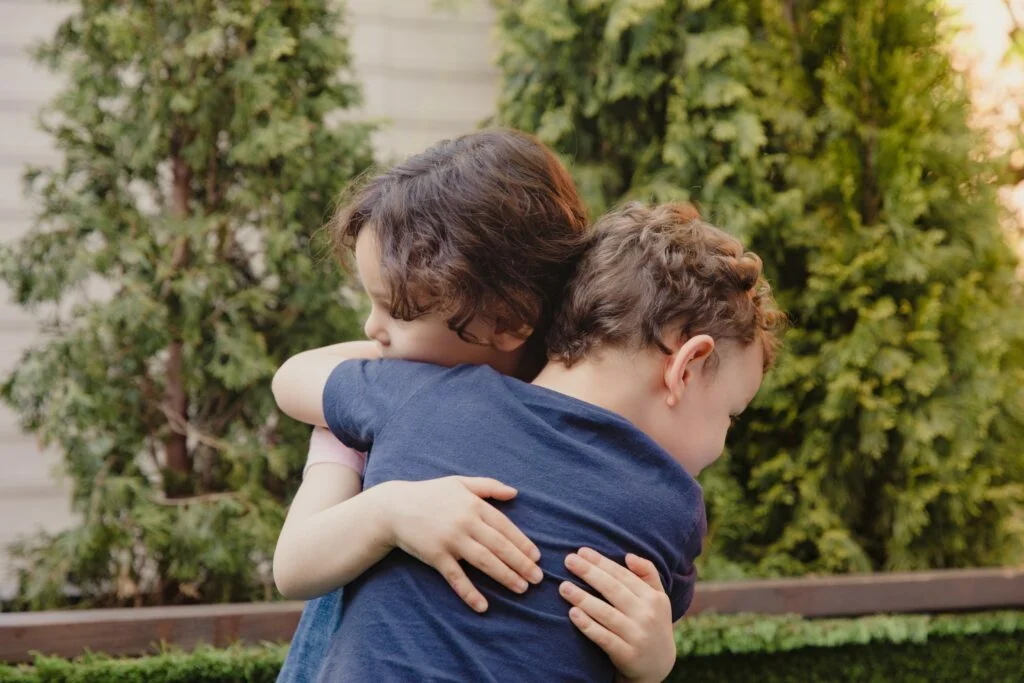
FAQs
How do I stop my ADHD siblings from fighting?
ADHD siblings may have a higher energy level and impulsiveness, leading to frequent clashes. To mitigate fights:
- Establish Clear Boundaries: Set specific house rules about acceptable behavior.
- Communication: Encourage them to express their feelings verbally rather than acting out.
- Timeouts: A brief separation can help them calm down and reset.
- Reward System: Recognize and reward positive interactions to reinforce good behavior.
How does ADHD affect siblings? ADHD can have a ripple effect on siblings:
- Emotional Strain: The unpredictable behavior of a sibling with ADHD can sometimes lead to feelings of frustration or resentment.
- Attention Imbalance: Siblings might feel overshadowed if the child with ADHD seems to get more parental attention.
- Increased Responsibility: They might sometimes take on a caretaker role, assisting their ADHD sibling with various tasks.
👉>>> Enhance Sibling Bonding with Our Recommended Products!
How do I stop my ADHD child from hitting my sibling? Physical aggression in children with ADHD can be challenging:
- Immediate Intervention: Safely separate the children and address the inappropriate behavior.
- Teach Alternative Responses: Help your ADHD child learn other ways to express their emotions, like using words or taking deep breaths.
- Consistent Consequences: Ensure that there are consistent repercussions for aggressive behavior.
- Seek Professional Help: Consider behavioral therapy or counseling to address recurring aggression.
How does ADHD affect younger siblings? Younger siblings can experience a unique set of challenges:
- Modeling Behavior: They might imitate the impulsive or hyperactive behavior of their ADHD sibling, thinking it’s the norm.
- Desire for Stability: The unpredictable nature of ADHD can make younger siblings crave routine and consistency.
- Feeling Overwhelmed: Being younger, they might find it harder to understand and cope with their sibling’s ADHD symptoms.
references:
Children and Adults with Attention-Deficit/Hyperactivity Disorder (CHADD).
- CHADD’s website offers resources, webinars, and articles specifically designed for families and individuals affected by ADHD,
American Psychiatric Association. (2013). Diagnostic and statistical manual of mental disorders (5th ed.). American Psychiatric Publishing.
Barkley, R. A. (2014). Attention-deficit hyperactivity disorder: A handbook for diagnosis and treatment (4th ed.). Guilford Press. (https://psycnet.apa.org/record/2014-57877-000)

